Pr:YLF crystals, Ho:YLF crystals
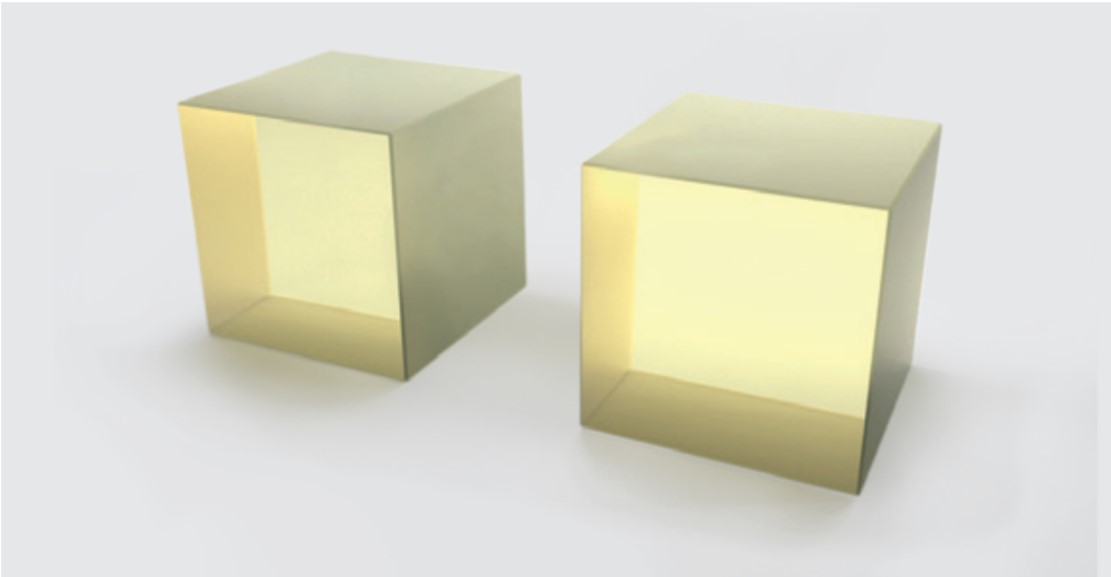
Very few laser materials have necessary properties for realization of lasing in the visible spectral range. Trivalent praseodymium (Pr3+) is known to be an interesting laser ion for using with solid-state lasers in the visible spectral range because of its energy levels scheme, providing several transitions in the red (640 nm, 3P0 to 3F2), orange (607 nm, 3P0 to 3H6), green (523 nm, 3P0 to 3H5), and dark red (720 nm, 3P0 3F3+3F4) spectral regions. Pr3+:YLF has been found to be a promising laser material for producing visible lasers directly and UV lasers through intracavity second-harmonic generation. Ho3+:YLF crystal is characterized by a long lifetime of 5I7 energy level which results in an excellent performance in Q-switched operation.
Ti:Sapphire crystals
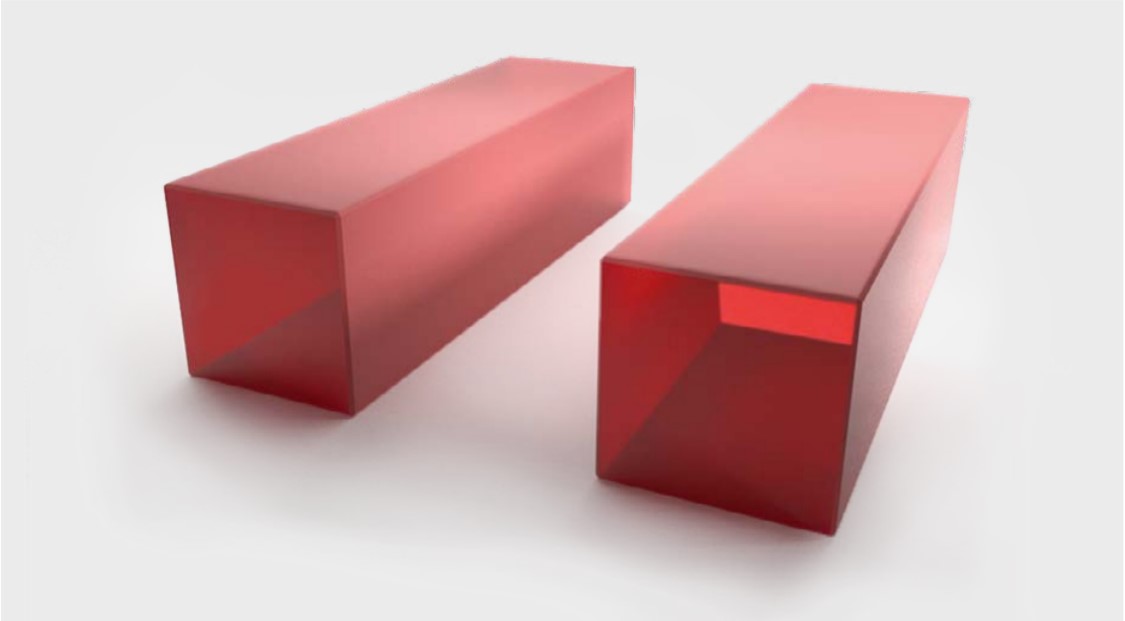
Titanium-doped sapphire (Ti3+:Al2O3) is a widely used transition-metaldoped laser crystal. Ti3+ ion has a very large gain bandwidth, that opens possibility to obtain very wide wavelength tunability realized in short pulse lasers. To obtain crystals with good optical quality Ti3+ doping concentration should not exceed 0,25 at.%. Ti:Sapphire crystal is characterized by a short upper-state lifetime and a high saturation power. All these properties lead to the necessity of using a strongly focused pump beam.
Tm, Ho:KYW crystals
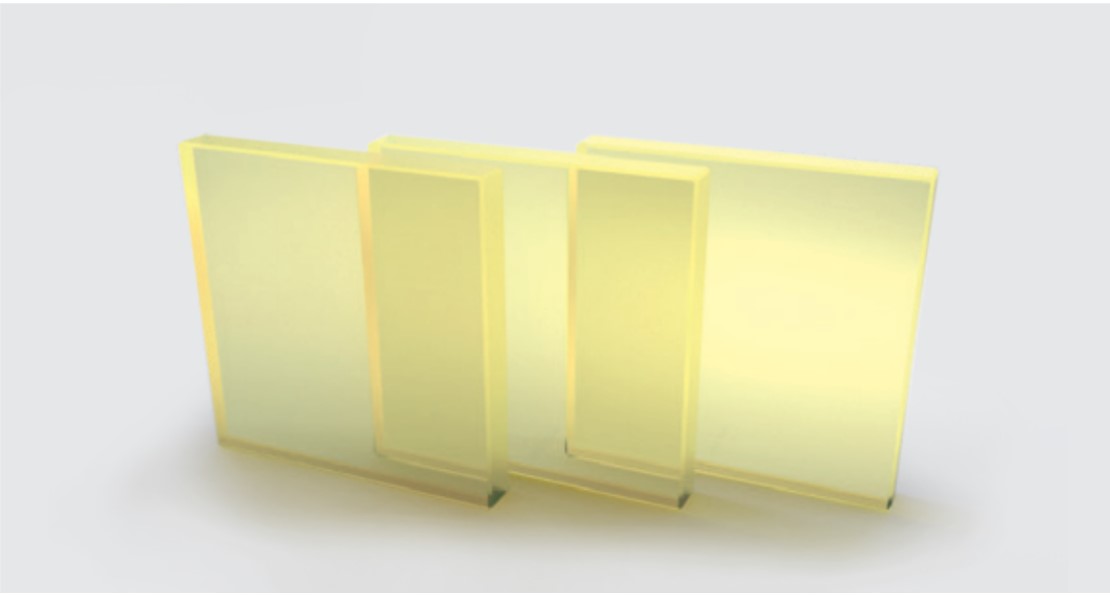
Ho3+ ions are characterized by higher emission cross-sections and longer upper laser level lifetimes compared to their Tm3+ counterparts. These features are desirable for a low-threshold and efficient laser operation. Ho3+ does not possess any strong absorption lines that are well matched to the outputs of commercially available laser diodes, therefore co-doping of Ho3+ with Tm3+ is chosen for an efficient operation across the 2 μm region through the energy transfer route from Tm3+ to Ho3+. Tm, Ho:KYW crystals are characterized by large and broad polarized absorption and emission bands, efficient energy transfer from Tm3+ to Ho3+.
Nd: YAG, Nd:KGW, Nd: YLF, Nd: YVO4 crystals
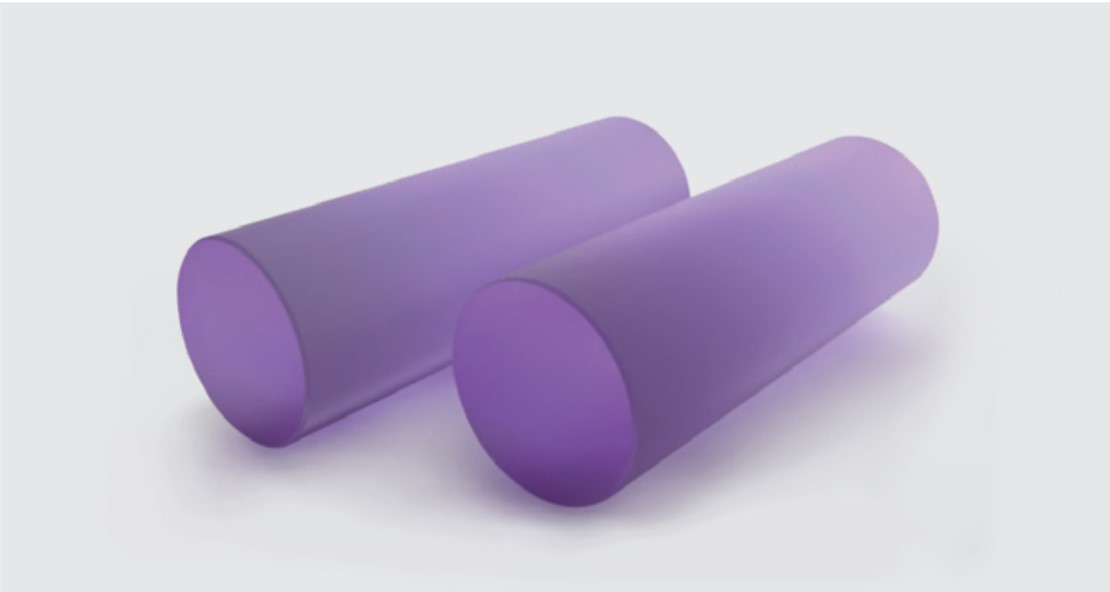
Nd3+:YAG crystal is the most widely used solid-state laser material. These crystals are characterized by relatively small gain bandwidth, which allows achieving a high gain efficiency and a relatively low lasing threshold. Nd:KGW crystal is a good choice for generation of picosecond laser pulses. These crystals are characterized by a lower stimulated emission cross-section compared to Nd:YAG crystals, therefore provide a better performance in Q-switched operation. Nd3+:YLF crystal is characterized by a long lifetime of 4F3/2 neodymium energy level. Compared to Nd:YAG, the lower thermal conductivity and a weak negative dn/dT lead to lower thermal distortions and allow to achieve a better output beam quality.Compared to Nd3+:YAG crystals, the Nd3+:YVO4 crystal has much higher absorption and emission cross-sections, a broader gain bandwidth and wavelength range for pumping, a shorter upper-state lifetime, a higher refractive index.
Yb:YVO4, Yb:Yab, Yb:YAP, Yb:YLF, Yb:YAG, Yb:KGW, Yb:CaF2, Yb:KYW crystals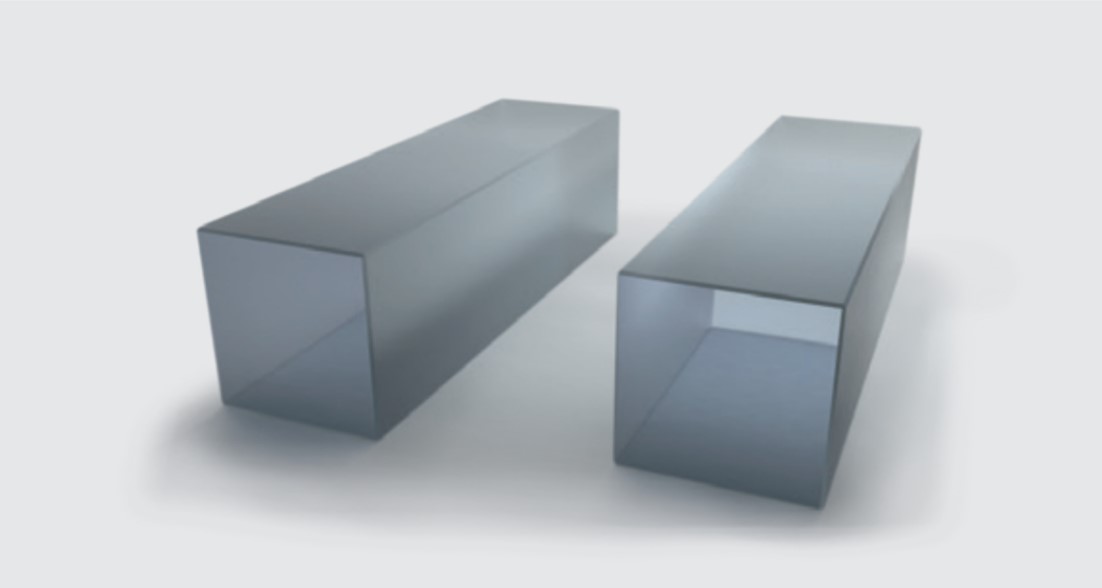
Yb3+:YAG crystals feature a 950 us lifetime of the 2F5/2 ytterbium energy level and a quantum defect of only ~9%. Yb3+:KGW crystals possess a large gain bandwidth that enables to obtain <100 fs pulse duration in mode-locked regime of operation. Yb3+:CaF2 are among most studied and promising crystals for the development of short-pulse, high-energy, high-power diode-pumped solid-state lasers.Yb3+:KYW crystals possess a large gain bandwidth that enables to obtain <100 fs pulse duration in mode-locked regime of operation. Yb Typical doping level 1-3 at.% 3+:YVO4 crystal has a broad and smooth emission spectrum that allows wide wavelength tuning ranges and generating ultrashort pulses in mode-locked lasers.Yb3+:YAB is one of the few representatives with multifunctional
properties: as a negative uniaxial crystal, it also possesses nonlinear optical properties, permitting a direct conversion of the infrared radiation to the visible through second order nonlinear processes. Yttrium aluminate doped with Yb3+, (Yb3+YAP) is a biaxial orthorhombic crystal. YAP crystal hardness and thermal conductivity are similar to YAG but exhibits a highly anisotropic thermal expansion coefficient and is birefringent
Er:YAG, Er:YLF, Er:KYW crystals
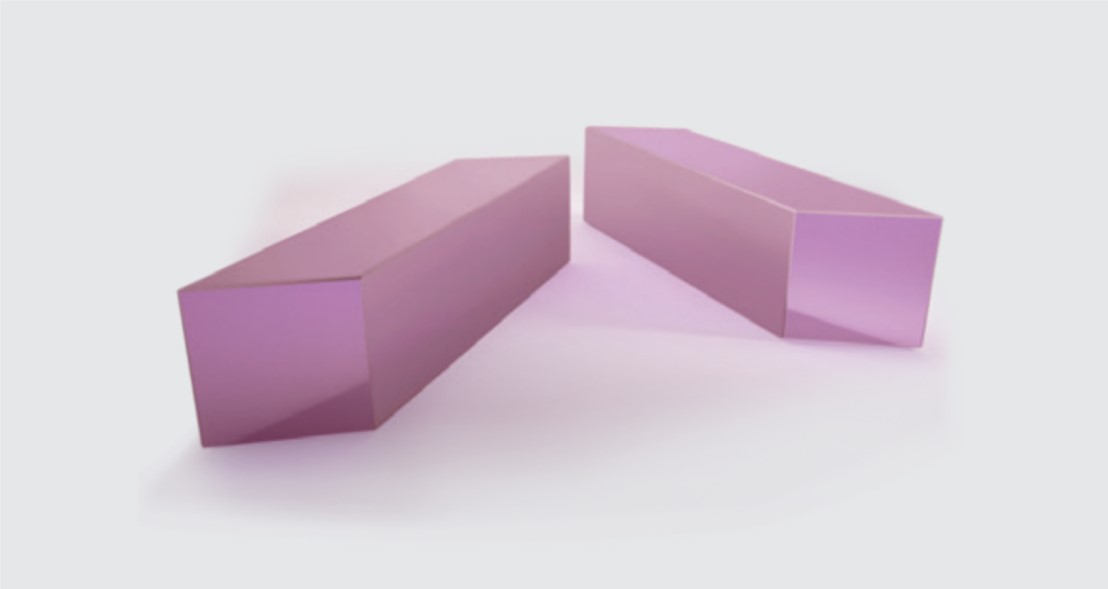
Er3+:YAG crystal is an attractive laser material for eye-safe emission at wavelengths of 1617 and 1645 nm which can be resonantly diode-pumped into the upper laser manifold at 1470 nm and 1532 nm. Er3+:YLF crystals are characterized by a low phonon frequency, which
decreases the probability of non-radiative multi-phonon relaxations, therefore increases the luminescence quantum efficiency. Er3+:KYW is a promising laser material for eye-safe emission at the wavelength of 1609 nm, which can be resonantly diode-pumped into the upper laser manifold at 1534 nm.
Er、Yb:phosphate glass, Er、Yb:YAB crystals
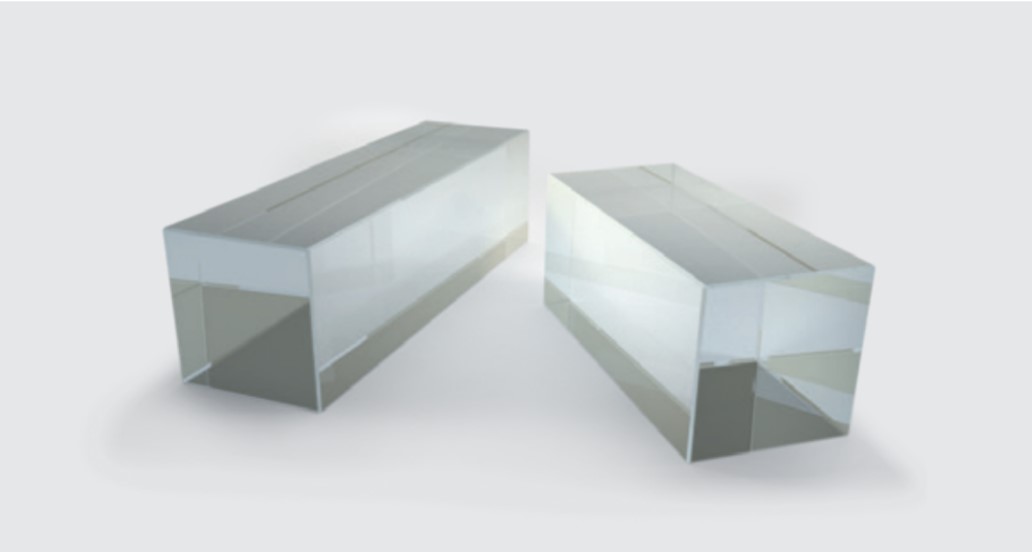
Er3+,Yb3+ co-doped phosphate glass (Er,Yb:phosphate glass) is a well-known and commonly used active medium for lasers emitting in the “eye-safe” spectral range of 1,5-1,6 µm. Phosphate glass combines a long lifetime (~8 ms) of 4I13/2 Er3+ upper laser level with a low (2–3 ms) lifetime of 4I11/2Er3+ level that is in resonance with Yb3+ 2F5/2 excited state. Er3+, Yb3+ co-doped yttrium-aluminum borate (Er, Yb:YAB) crystal is an alternative to commonly used Er,Yb:phosphate glass as an active medium of “eye-safe” (1,5-1,6 µm) lasers with a high average output power in CW and pulsed modes.
Tm:YLF crystals, Tm:KYW crystals
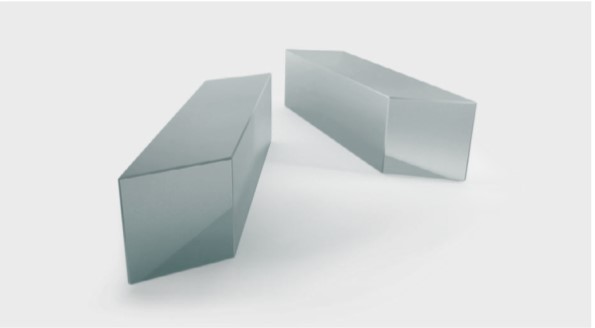 Tm3+:YLF crystal features high absorption peaks conveniently located for diode pumping around 792 nm and exhibits a cross-relaxation process, which creates two ions in the upper laser level for each pump photon absorbed. What is more, the refractive index of Tm3+:YLF decreases with temperature, leading to a negative thermal lens that is partly compensated by a positive lens effect due to end face bulging. Advantages of Tm-doped KYW crystals include a broad fluorescence band, a large emission cross section and a relatively low upper level lifetime. Such properties combination of properties is very promising for generation of femtosecond pulses in solid-state laser systems.
Tm3+:YLF crystal features high absorption peaks conveniently located for diode pumping around 792 nm and exhibits a cross-relaxation process, which creates two ions in the upper laser level for each pump photon absorbed. What is more, the refractive index of Tm3+:YLF decreases with temperature, leading to a negative thermal lens that is partly compensated by a positive lens effect due to end face bulging. Advantages of Tm-doped KYW crystals include a broad fluorescence band, a large emission cross section and a relatively low upper level lifetime. Such properties combination of properties is very promising for generation of femtosecond pulses in solid-state laser systems.
Cr:LiSAF crystals
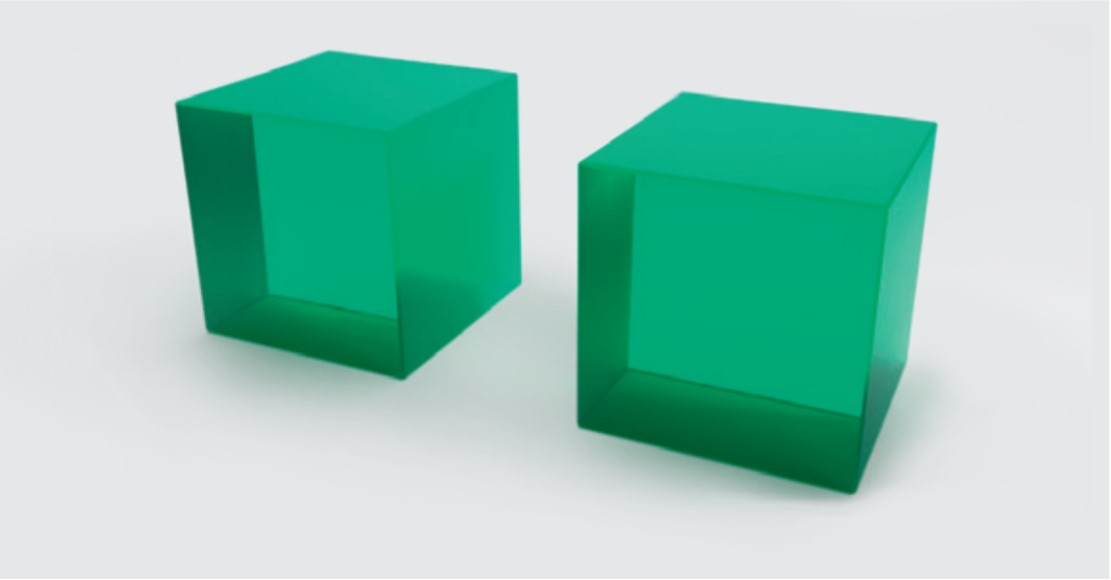
Cr3+:LiSAF gain medium possesses a broad emission band in the near infrared that allows a widely tunable laser operation and generation of ~10 fs light pulses via mode-locking technique. Cr:LiSAF crystals can be grown with a very low loss level (<0,2%/cm). It enables to construct high-Q-cavities, resulting in lasing thresholds as low as 2 mW and slope efficiencies above 50%. Moreover, nonlinear refractive index of Cr:LiSAF is about four times lower than that of Ti:sapphire, which reduces parasitic nonlinearities in the ultrashort pulse generation and amplification applications.
Cr:YAG crystals, V:YAG crystals, Co:Spinel crystals
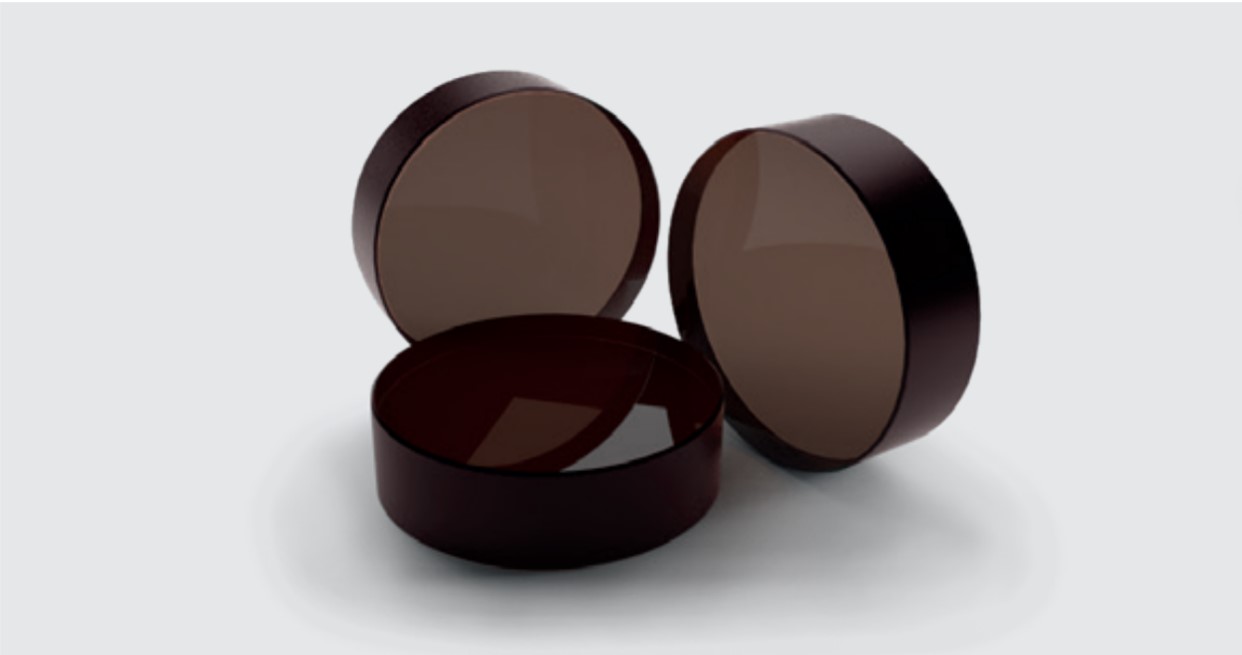
Cr4+:YAG crystals are ideal for passive Q-switch operation of Nd:YAG and other Nd3+ or Yb3+ doped laser crystals in the wavelength range of 900 nm to 1200 nm. Remarkable feature of Cr4+:YAG is the high damage threshold of >10 J/cm2@1064 nm, 10 ns. V:YAG is a relatively new saturable absorber. Passive Q-switch operation is available in the spectral range from 1064 nm to 1440 nm, primarily because of an extremely high ground state. It also has insignificant excited state absorption. Co:Spinel is a recently developed material, which has been proven to be a very effective passive Q-switch in lasers emitting in the range of 1,2 µm – 1,6 µm. Co:Spinel has a high absorption cross-section, which permits Q-switch operation of Er:glass laser (both flash-lamp and diode-laser pumped) without an intracavity focusing.
BBO, LBO, KTP, KDP, DKDP, ZGP, Lithium niobate, AgGaSe2,CdSe, AgGaS2, GaSe crystals
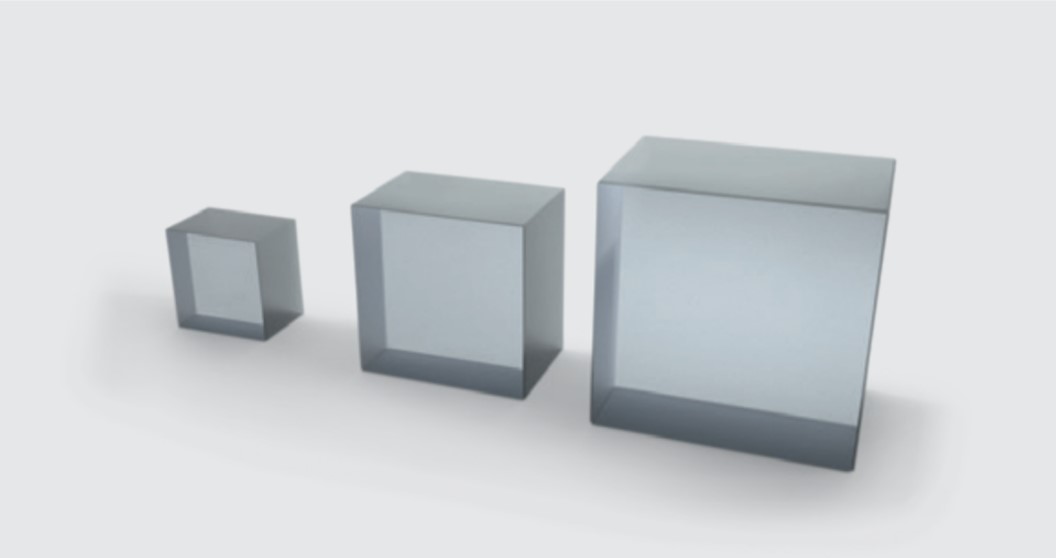
Nonlinear optical crystals are used in many different nonlinear parametric applications. To mention a few: second harmonic generation, difference frequency generation, optical parametric amplification and others. A proper crystal has to be chosen in order to use it for a particular application. It should have transparency in the required spectral range, adequate birefringence for phase-matching, a high nonlinear coefficient, high optical damage threshold, and other properties. Optogama currently provides the following nonlinear crystals: BBO, LBO, KTP, KDP, DKDP, ZGP, Lithium niobate, AgGaSe2,CdSe, AgGaS2, GaSe crystals
Barium Nitrate, KGW, KYW crystals
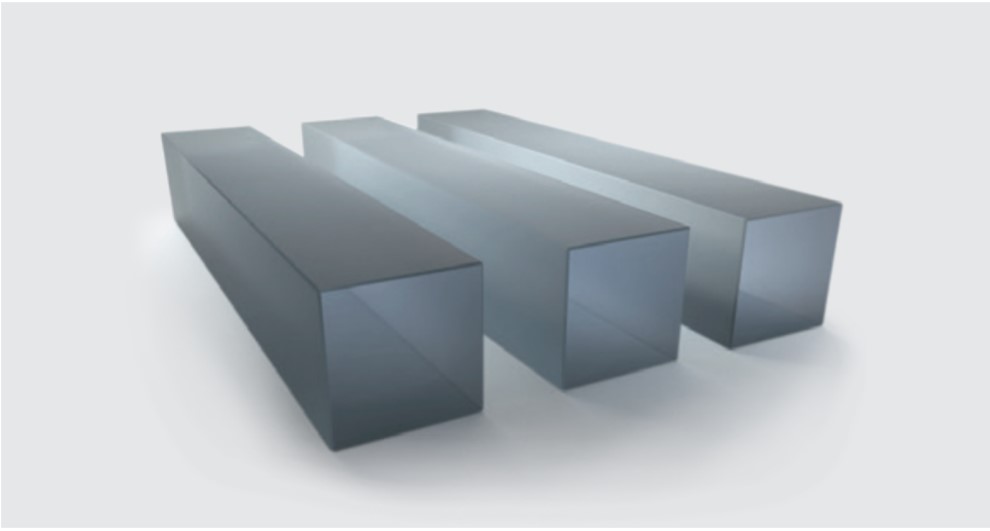
Barium nitrate (Ba(NO3)2) is one of the leading crystals among solid-state Raman shifters in terms of Raman gain coefficient, which is known to be the highest at nanosecond steady-state regime (g R = 47 cm/GW@532 nm pump). Barium nitrate also features a moderately broad transparency range (0,33 μm – 1,8 μm) and high damage threshold. Potassium gadolinium tungstate (KGd(WO4)2, KGW) crystals feature good mechanical properties, relatively good thermal conductivity (2,5-3,4 Wm-1 K-1) and wide transparency range, which spans from 350 nm to 5 µm. Potassium yttrium tungstate (KY(WO4)2, KYW) crystals offer two strong phonon modes around 765 cm-1 and 905 cm-1, which have similar Raman gain and are pump polarization dependent. KYW crystals possess good mechanical properties, high optical damage threshold, broad transparency range (350 nm – 5,5 µm) and thermal conductivity around three times higher than barium nitrate.
BSO, Fe:LiNbO3, SBN, BGO Crystals
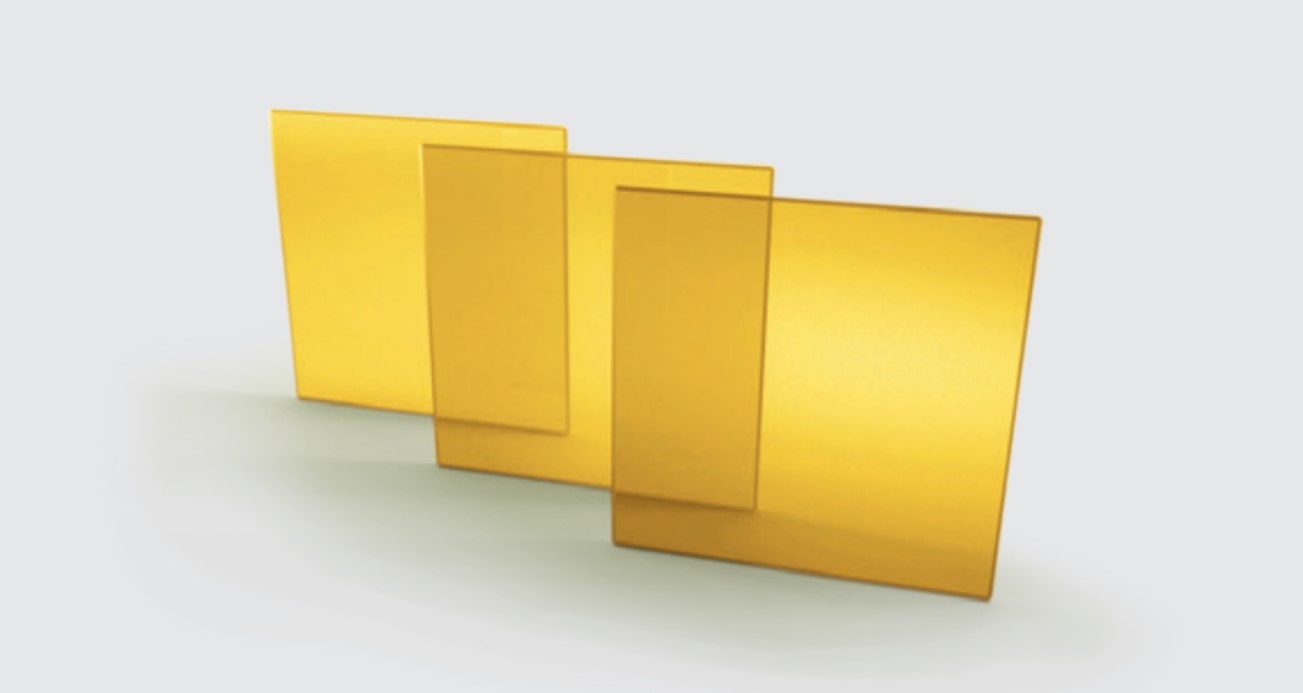
Optogama provide BSO, Fe:LiNbO3, SBN and BGO crystals not mainly, but necessarily for applications, which exploit photorefractive effect. Photorefractive effect is a phenomenon whereby the local index of refraction is modified by spatial variations of light intensity. It is observed when coherent light interferes with each other in photorefractive material, which forms a spatially varying pattern of illumination. The effect can be used to store temporary, erasable holograms, also known as holographic data storage. It can also be used to create phase-conjugate mirrors or optical spatial solitons.
Variable beam expanders VEX
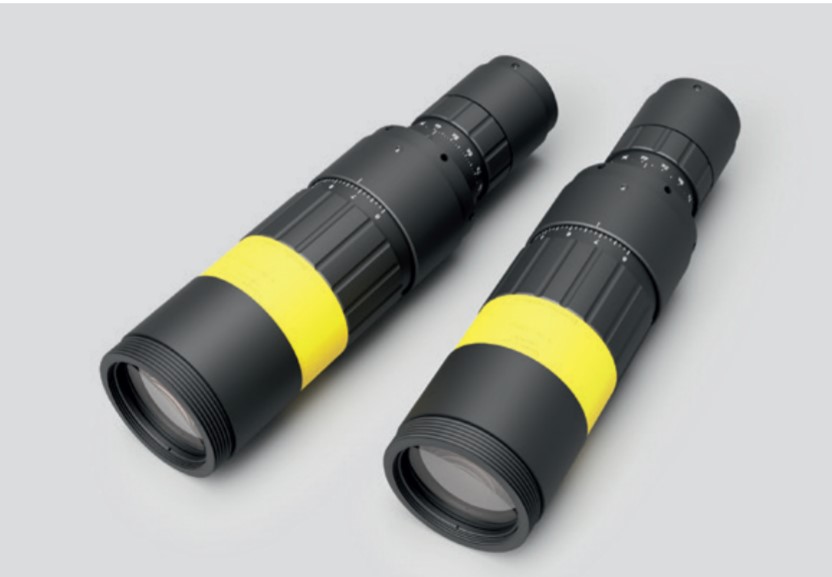
Optogama introduces variable manual beam expanders VEX series used to increase or decrease the laser beam diameter. Standard or custom-made laser beam expanders for the UV, visible, and NIR spectral ranges feature a unique mechanical sliding-lens design, ensuring a high pointing stability and minimal dimensions.
Fixed ratio beam expanders FEX
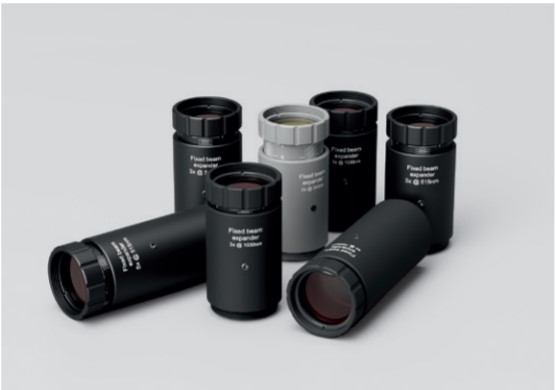
Fixed ratio beam expanders FEX series are used to increase the laser beam diameter. The FEX model diversity cover the UV, visible and NIR spectral ranges. These compact beam expanders are designed for required wavelength and have divergence adjustability. All optical elements of beam expanders are made of fused silica with high LIDT coatings and provide a stable and reliable performance even using them with high power lasers. Due to the change of fixed multiples, the price is much cheaper than that of variable multiple beam expander. Customers with low budget requirements can choose FEX fixed magnification laser amplifier
Compact motorized beam expanders MEX
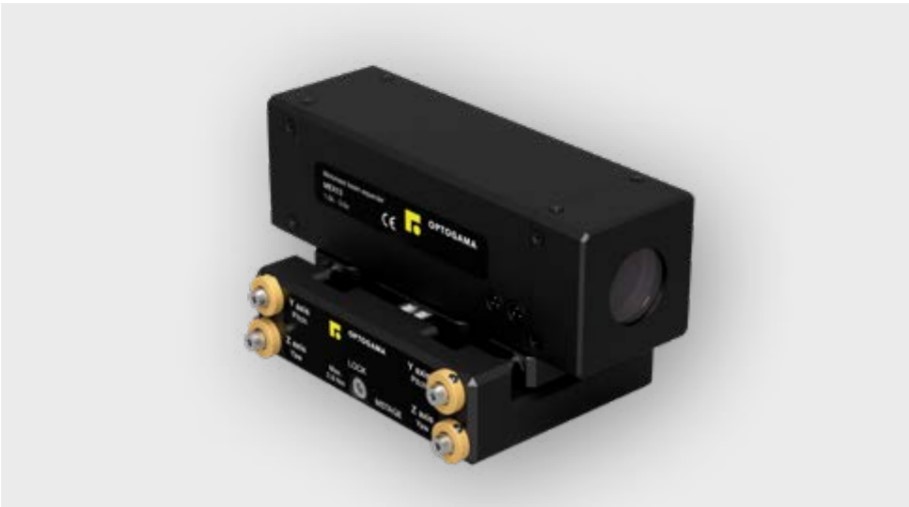 Motorized laser beam expanders MEX series are used to increase the laser beam diameter and adjust divergence. Standard or custom-made beam expanders feature a unique mechanical closed loop sliding-lens design ensuring high pointing stability and minimal dimensions. These variable magnification (zoom) beam expanders and reducers are designed for required wavelength and each type of our beam expanders have motorized divergence adjustability. It adopts USB and RS232 interfaces, integrated control, <0.2 mrad high beam pointing stability, can be applied to up to 200W high-power laser micromachining and beam management, etc.
Motorized laser beam expanders MEX series are used to increase the laser beam diameter and adjust divergence. Standard or custom-made beam expanders feature a unique mechanical closed loop sliding-lens design ensuring high pointing stability and minimal dimensions. These variable magnification (zoom) beam expanders and reducers are designed for required wavelength and each type of our beam expanders have motorized divergence adjustability. It adopts USB and RS232 interfaces, integrated control, <0.2 mrad high beam pointing stability, can be applied to up to 200W high-power laser micromachining and beam management, etc.
Laser power attenuator
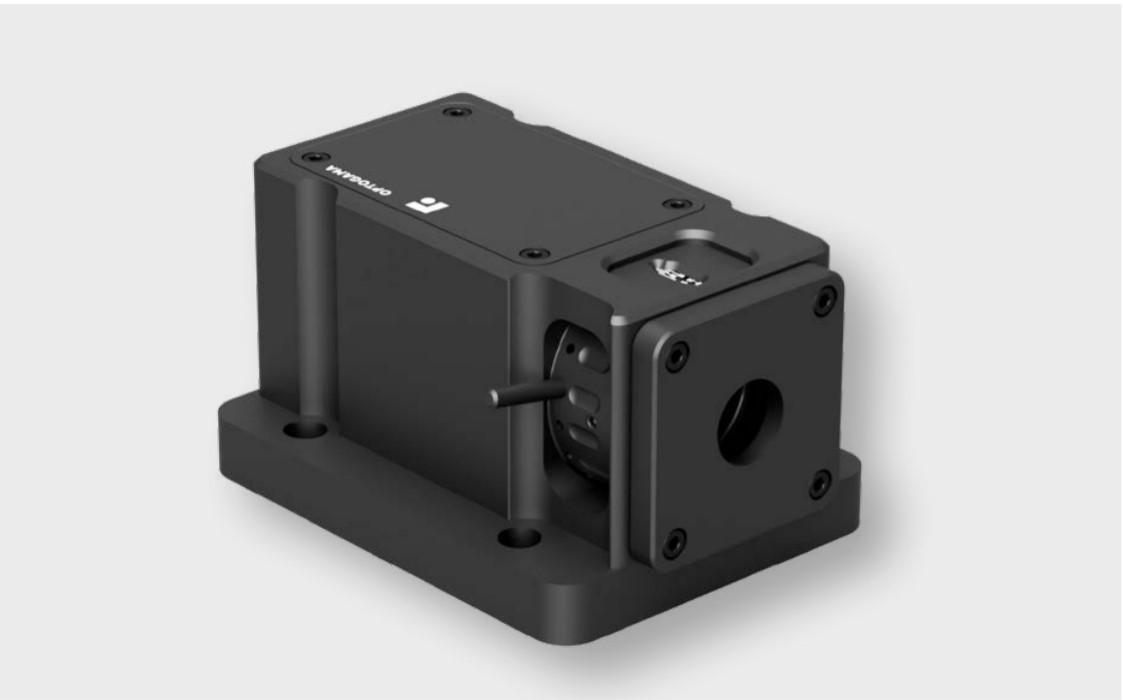 Optogama designs and manufactures industrial grade manual control laser power attenuators for use in the UV, visible, and NIR spectral
Optogama designs and manufactures industrial grade manual control laser power attenuators for use in the UV, visible, and NIR spectral
ranges, from 250 nm to 2500 nm and a attenuation ratio ranging from 0.1% to 98%. All optical elements of these laser power attenuators are made for high LIDT and provide a stable and reliable performance even when using them with high power lasers in industrial applications.
Infrared (IR) viewers ABRIS M
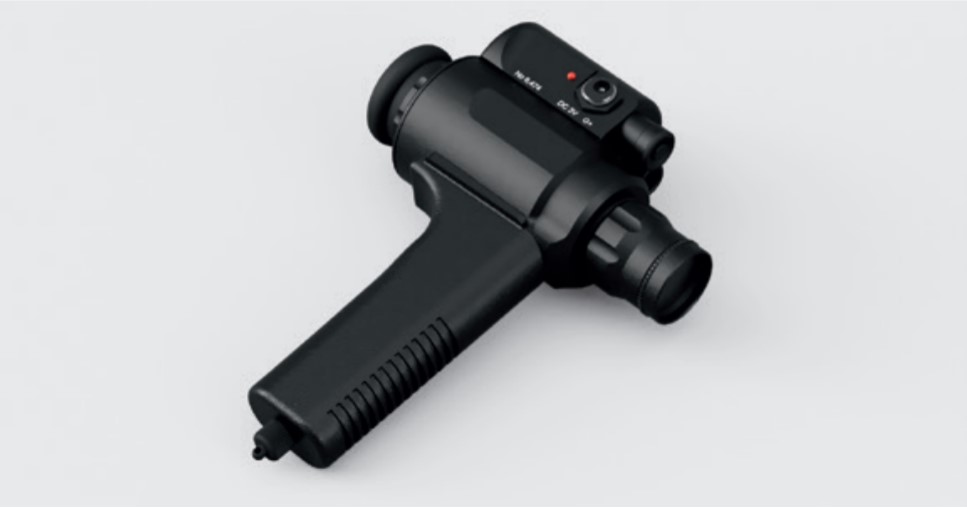 Infrared (IR) viewers are used to observe, register, and record both indirect and direct radiation of IR lasers, light emitting diodes (LED’s), dye and other IR-sources. It is ideal for IR-laser beam alignment and inspection, optical fiber alignment, telecommunications, solar panel inspection, photo processing, surveillance and investigation in botany, biophysics, medicine, forensics and art restoration, infrared microscopy, fluorescence etc. High performance image conversion infrared (IR) viewers based on high-grade image converter are designed to observe indirect radiation of infrared laser, light emitting diodes (LED), dye and other IR-sources in 350–2000 nm spectral range.
Infrared (IR) viewers are used to observe, register, and record both indirect and direct radiation of IR lasers, light emitting diodes (LED’s), dye and other IR-sources. It is ideal for IR-laser beam alignment and inspection, optical fiber alignment, telecommunications, solar panel inspection, photo processing, surveillance and investigation in botany, biophysics, medicine, forensics and art restoration, infrared microscopy, fluorescence etc. High performance image conversion infrared (IR) viewers based on high-grade image converter are designed to observe indirect radiation of infrared laser, light emitting diodes (LED), dye and other IR-sources in 350–2000 nm spectral range.
Mid-infrared (MIR) waveplates
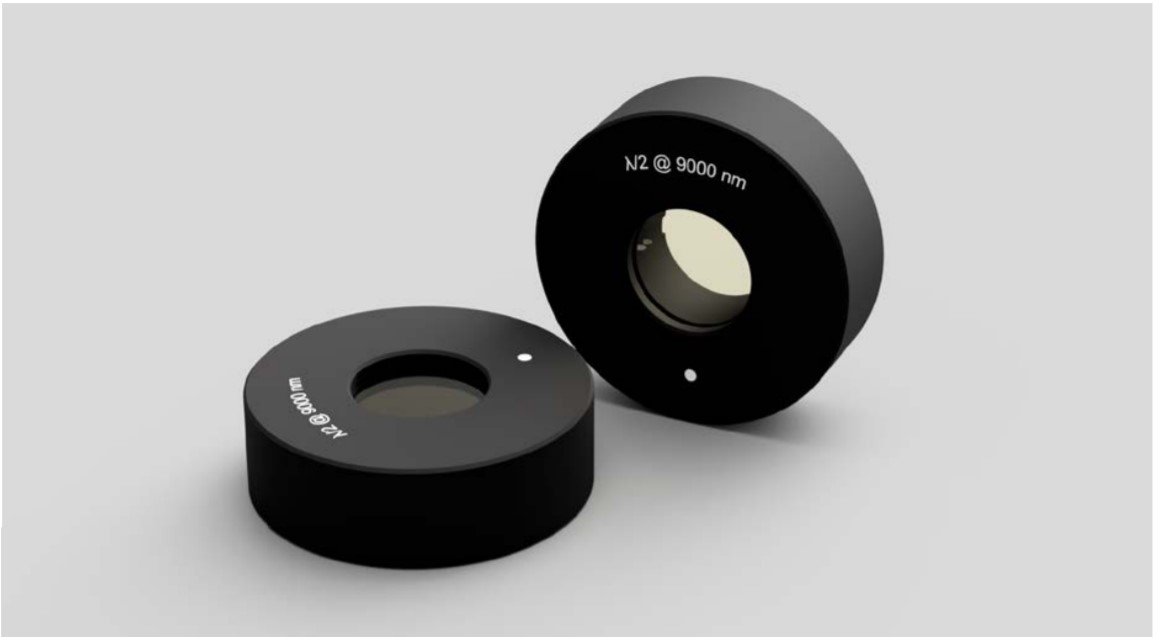 Optogama provide unique zero-order, monolithic design mid-infrared (MWIR and LWIR) waveplates mounted in ø25,4 x 6 mm black anodized metal mount for the range of 2800 nm – 10600 nm. These waveplates are available with quarter-wave, half-wave or any other custom retardance. Effective aperture of ø10mm.
Optogama provide unique zero-order, monolithic design mid-infrared (MWIR and LWIR) waveplates mounted in ø25,4 x 6 mm black anodized metal mount for the range of 2800 nm – 10600 nm. These waveplates are available with quarter-wave, half-wave or any other custom retardance. Effective aperture of ø10mm.
Crystalline quartz waveplates
 Optogama provide mounted crystalline quartz zero-order compensated, air-spaced half-wave and quarter-wave retardance waveplates designed for a particular wavelength in the range of 257 – 1550 nm. Air-spaced construction enables these waveplates to be used for high-power applications, while zero-order design features lower temperature and wavelength dependence compared to low and
Optogama provide mounted crystalline quartz zero-order compensated, air-spaced half-wave and quarter-wave retardance waveplates designed for a particular wavelength in the range of 257 – 1550 nm. Air-spaced construction enables these waveplates to be used for high-power applications, while zero-order design features lower temperature and wavelength dependence compared to low and
multiple order waveplates. Mounted in ø25,4 x 6 mm black anodized metal mount, with an effective optical aperture of ø18 mm.
Achromatic (broadband) waveplates
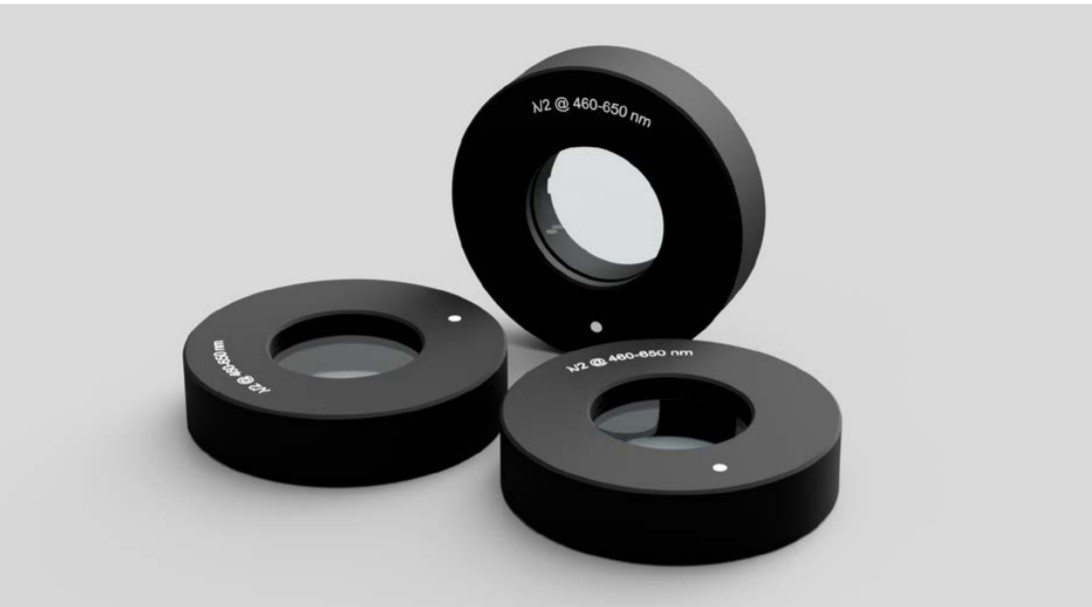 Optogama provide mounted achromatic (broadband) half-wave and quarter-wave retardance waveplates for several bands in the wavelength range of 460 nm – 1700 nm. Air-spaced construction enables to use these waveplates for high-power applications. These waveplates are ideal for multiple wavelengths and broadband operation, due to their constant retardance over a particular broad wavelength range. Mounted in ø25,4 x 6 mm black anodized metal mount, with ø12 mm and ø18 mm clear aperture selection.
Optogama provide mounted achromatic (broadband) half-wave and quarter-wave retardance waveplates for several bands in the wavelength range of 460 nm – 1700 nm. Air-spaced construction enables to use these waveplates for high-power applications. These waveplates are ideal for multiple wavelengths and broadband operation, due to their constant retardance over a particular broad wavelength range. Mounted in ø25,4 x 6 mm black anodized metal mount, with ø12 mm and ø18 mm clear aperture selection.